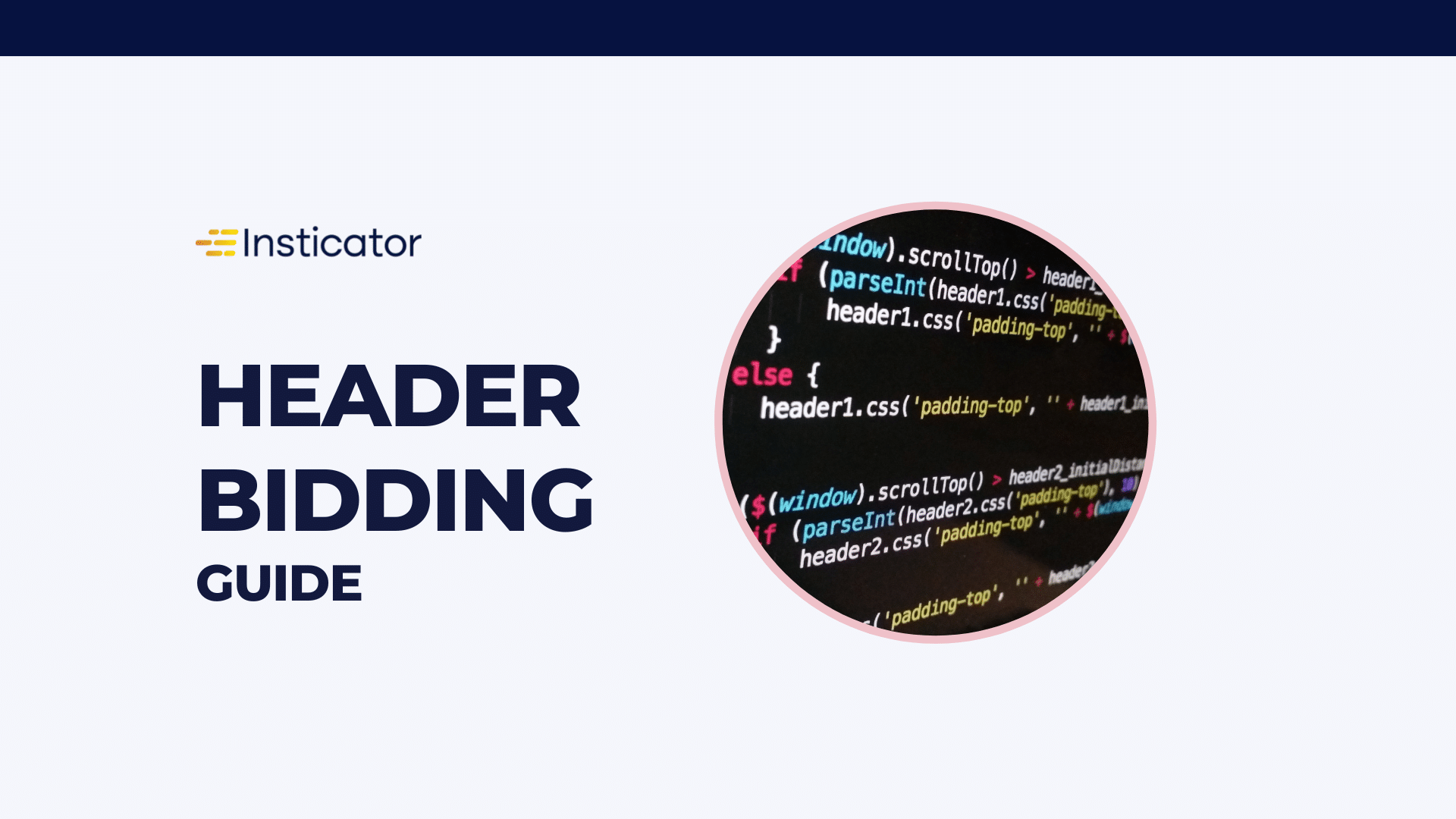5 Easy Ways To Monetize A Website in 2023
January 2023
#Monetization

How to boost website engagement and monetization can be a tricky subject for some publishers. Online marketers and bloggers always struggled with doing two (or more things) at once. Sure, you can craft a catchy headline and tell a compelling story that your readers want to keep reading, but how do you get them to click and/or spend?
Fortunately, there are a variety of methods that help publishers solve this puzzle so that revenue grows as quickly as website engagement. From interactive native media to branded content, here are some ways publishers can engage and monetize at the same time.
1. Advertising
You can sell advertising space on your website or app to businesses and organizations that want to reach your audience.
If you are new to the concept, start with AdSense. It’s easy to get started and you would need minimal ad tech knowledge to show ads and earn.
As you start growing your business, try other advertising techniques that result in better results – such as Header Bidding. It’s a technique that sends your bid requests to multiple ad buyers at the same time and the highest bidder wins the auction.
Similarly, test and try multiple techs and grow your ad stack.
If are looking for a partner to manage your ad stack, then we at Insticator can help you. Contact us to learn more about our offering.
2. Direct advertising
Direct advertising is when a business or organization pays to place an ad on your website or social media channels in order to reach your audience. Here are some steps to earn via direct advertising:
1. Build an audience: Build a large following on social media platforms or a sizable readership on your blog or website.
2. Create a media kit: Create a media kit that includes information about your audience, demographics, reach, and engagement rates. This will help you to showcase your reach and influence to potential advertisers.
3. Identify your target audience: Understand the demographics of your audience and what they are interested in so that you can target the right businesses or organizations.
4. Sell ad space: Start selling ad space on your website or social media channels. You can sell banner ads, sponsored posts, or sponsored videos.
5. Negotiate fair prices: Based on your reach, engagement, and influence, negotiate fair prices for your ad space. Be sure to clearly state the terms of the agreement in a contract.
6. Create ad policies: Create ad policies that outline what types of ads are allowed on your website or social media channels and how they must be labeled.
7. Monitor the ads: Regularly monitor the ads that are placed on your website or social media channels to ensure that they align with your values and audience, and that they are clearly labeled as ads.
8. Track and report: Use tools such as Google Analytics to track the performance of the ads and provide insights to the advertiser on the impact of the campaign.
If you don’t know how to start, then we at Insticator can help your build one-on-one relationships with buyers and you can initiate direct advertising with them. Contact us for more information.
3. Affiliate marketing
You can promote other people’s products and earn a commission for each sale made through your unique referral link.
Affiliate marketing is a performance-based marketing strategy in which a business rewards one or more affiliates for each visitor or customer brought about by the affiliate’s own marketing efforts. Here are some steps to make money in affiliate marketing:
1. Choose a niche: Pick a niche or topic that you are passionate about and that has a large audience.
2. Find affiliate programs: Look for affiliate programs that are related to your niche. Some popular affiliate networks include Clickbank, Commission Junction, and Amazon Associates.
3. Use affiliate links: Include affiliate links within your content. These links will track any sales made through your unique referral link, allowing you to earn a commission for each sale.
4. Track your performance: Use tools like Google Analytics to track your website traffic and sales, and adjust your strategy accordingly.
It’s important to disclose your affiliate relationships. Additionally, it’s important to make sure that you are promoting products or services that align with your values and audience.
4. Sponsored content
Sponsored content is a form of advertising in which a brand pays a content creator to feature their product or service in a piece of content. Here are some steps to make money via sponsored content:
1. Build an audience: Build a large following on social media platforms or a sizable readership on your blog or website.
2. Create a media kit: Create a media kit that includes information about your audience, demographics, reach, and engagement rates. This will help you to showcase your reach and influence to potential sponsors.
3. Find sponsors: Look for brands that are a good fit for your audience and content. You can reach out to companies directly or use an agency to connect with brands.
4. Create high-quality content: Create high-quality content that is engaging and relevant to your audience.
5. Promote your sponsored content: Share your sponsored content on your social media channels and website to reach a larger audience.
It’s important to be selective with the brands you work with and ensure that the sponsored content aligns with your values and audience and that it’s clearly labeled as sponsored content.
5. Membership or subscription models
Selling subscriptions is a way to monetize your content by charging a recurring fee for access to exclusive content or perks. Here are some steps to earn by selling subscriptions:
1. Build an audience: Build a large following on social media platforms or a sizable readership on your blog or website.
2. Create exclusive content: Create exclusive content that is not available to non-subscribers. This can include premium articles, videos, e-books, webinars, or live streams.
3. Choose a pricing model: Decide on a pricing model that works best for your audience. You can charge a monthly or annual fee, offer different tiers of subscriptions with different perks, or offer a free trial.
4. Use a platform to manage subscriptions: Use a platform such as Memberful, Patreons, Substack, or Podia to manage subscriptions and payments.
5. Promote your subscription: Promote your subscription on your website, social media channels, and email marketing campaigns.
6. Provide excellent customer service: Provide excellent customer service to your subscribers and gather feedback to improve your services.
7. Continuously create new content: Continuously create new content and update your exclusive content to keep your subscribers engaged and interested.
8. Track and analyze: Use tools such as Google Analytics to track the performance of your subscriptions and analyze how you can improve.
It’s important to ensure that the exclusive content is of high quality and provides enough value to justify the subscription fee. Additionally, it’s important to be transparent about the terms of the subscription, including the fee and the duration of the subscription.
Final word
All of these monetization techniques have two things in common – 1. Audience and 2. Quality content.
To begin earning money through your website, start by creating an appealing and easy-to-use website. Determine your specific niche and publish a significant amount of valuable content in the form of blog posts.
Additionally, set up a newsletter to keep your readers informed and engaged. Develop a relationship with your early readers by actively responding to their comments, emails, and social media messages.
Once you have established a strong connection with your audience, consider implementing one of the monetization strategies.




